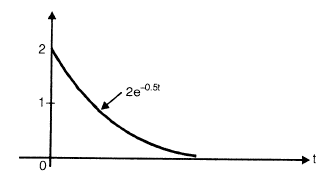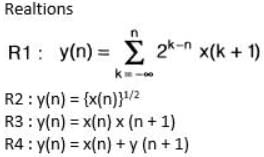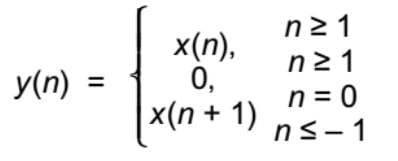Test: Signals & Systems- 1 - Electrical Engineering (EE) MCQ
10 Questions MCQ Test GATE Electrical Engineering (EE) Mock Test Series 2025 - Test: Signals & Systems- 1
For the signal c(t) given below:

The odd components of the signal x(t) is ?
Consider the signals, 
 which of the following statement is correct about signal x3(t)?
which of the following statement is correct about signal x3(t)?

 which of the following statement is correct about signal x3(t)?
which of the following statement is correct about signal x3(t)?Let P be linearity, Q be time-invariance, R be the causality and S be the with memory. A continuous-time system has the input-output relationship: y(t) = t x(t) where y(t) is the output and x(t) is the input. The system has the properties.
The goup delay function τ(ω) is related to phase function φ (ω) as
A disrete-time LTI susyem is described by,
where, h1(n) = sin δn h2(n) = an u(n); l a I < 1 and x(n) = 8(n) - a δ(n - 1)
Which one is the output y(n) ?
Match the system properties P1, P2 with the discrete time system relations R1, R2, R3 and R4.
Properties
P1 : Stable
P2 : Casual

Let P be linearity, Q be time-in variance, R be causality and S be stability. A discrete-time system has the input output relationship—

where s(n) is the input and y(n) is the output. The above system has the properties—
|
25 docs|247 tests
|
|
25 docs|247 tests
|




















